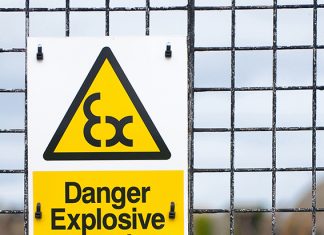ground-breaking solution for recessed lighting in hazardous areas
Raytec’s SPARTAN Recess is a ground-breaking solution for recessed lighting in hazardous areas. This one-of-a-kind range of luminaires offers a range of benefits, including...
When did you last review your Hazardous Area Classification?
On the 1st of October 2024, the Energy Institute published the 5th edition of their ‘Model Code of Safe Practice Part 15: Area Classification...
The Third Dimension of Risk: using organisational maturity to assess and mitigate risk
Mike Meen, Technical Director at Bureau Veritas, assesses whether the traditional two-dimensional approach to risk is adequate in today’s complex society, and highlights the...
The Benefits of Automation Lines in Labelling Chemical Products
In today’s fast-paced industrial world, the chemical industry faces unique challenges in maintaining safety, accuracy, and efficiency. One of the pivotal elements in addressing...
Moving towards Green Energy and the Challenges That We Face
Chemical engineering, process safety and associated industries are built around the mutual core value of striving for a greener, more sustainable environment, and this...
Digitalisation in the verification of safety and environmentally critical elements in the chemical industry
Mike Meen, Technical Director at Bureau Veritas, highlights the crucial role that safety and environmentally critical elements (SCE) play in the chemical industry, and...
Understanding the hazards of your ingredients
Do you know your ingredients?
Following the 1992 Earth Summit and 2002 World Summit, the United Nations developed the ‘Globally Harmonized System’ (GHS) or ‘Purple...
Bayer receives approval for ‘groundbreaking’ new fungicide
Bayer has received a regulatory ‘one-two’ for its new fungicide active substance and the first product to contain it.
The Chemicals Regulation Division (CRD) of...
Hazard Studies – The Value of a Staged and Methodical Approach
Hazard studies are a well-established and essential practice within the chemical industry and are intended to enable effective planning, implementation and safe operation of...
BSIF tests unveil vast quantities of non-compliant safety footwear on UK market
British Safety Industry Federation (BSIF) testing has revealed that a significant amount of safety footwear produced by non-members fails to perform as advertised.
Safety footwear...
















